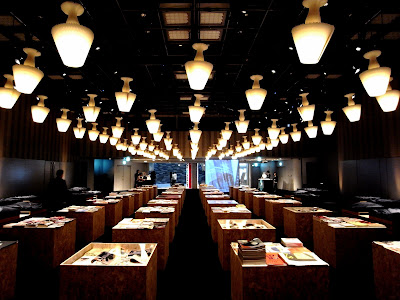
Christian Peet Releases New Novel 'Big American Trip'
Assuming the form of postcards authored by an "alien" of unknown nationality, ethnicity, and gender, addressing a variety of people and organizations (political figures, multinational corporations, people in public toilets, John Barr, et al), Big American Trip is a startling document of fear and loneliness in the 21st century U.S. Whether deconstructing road signs, a failed relationship, or the state of contemporary poetry, the voice behind these texts is at once familiar and strange, determined to be free, and desperate to communicate with anyone who has ever felt at odds with the Language of a Nation.
Also: The companion YouTube project, involving a diverse group of activists, actors, artists, musicians, and writers performing video readings / interpretations of individual postcards, may be seen here: http://bigamericantrip.blogspot.com/
Some responses to Big American Trip:
In Big American Trip, Christian Peet rejects the idyllic dream of a post-national freedom, instead going back to those two archaic, fundamental tools of American nation building—the highway system and the postcard—not to find an imagined national community but to reveal the strangeness, violence and noise that results from the U.S. clashing with other cultures, languages and nations, and—just as importantly—clashing with itself.
—Johannes Göransson, author of A New Quarantine Will Take My Place and Pilot, co-editor of Action Books and Action, Yes
The complexities of alienation hybridize the mouth, double the tongue. Derrida writes, “What does a post card want to say to you? On what conditions is it possible? Its destination traverses you, you no longer know who you are…instead of reaching you it divides you…it leaves you, it gives you.” Christian Peet’s Big American Trip embodies the enigma of the postcard—writing that is at once private and public—and like all letters, these maintain a sense of internal drifting that requires us to question our own sense of identity and location. The logic of Peet’s syntax and juxtapositions gives us the poetry of the divided tongue: in the space between multiple languages, we are invited to trespass our own borders that we might hear (and learn to speak) radical loss. A whole new spin on the classic postcard message: “wish you were here,” Big American Trip is a remarkable, necessary book, and a wonderful achievement.
—Selah Saterstrom, author of The Meat & Spirit Plan and The Pink Institution
Samuel Richardson's epistolary novel Pamela is a sad and hilarious book full of devastating social commentary about money, power, sex and British social mores. A couple centuries later, Christian Peet has updated poor Pamela's well behaved letters into blistering postcards dashed off by a nervy, distraught human being of indeterminate gender who is both losing and finding him/herself in and across a terrifying pre-Obama America. Stamp this one with approval.
—Rebecca Brown, author of The Last Time I Saw You, The End of Youth, Excerpts From A Family Medical Dictionary The Gifts of the Body, The Terrible Girls, and others
The author of these postcards has transcribed this alien’s heart. Peet drives through the US landscape (circa early 21st century), offers us the hijacked language of a nation, and through this text asks: and what words have been left for you to use, honestly?
—Elena Georgiou, author of Rhapsody of the Naked Immigrant and mercy mercy me
Big American Trip
Christian Peet
Shearsman Books,
March 2009
Paperback, 80 pp.,
9x6ins, $15 / £8.95
ISBN 9781848610156
Christian Peet
Shearsman Books,
March 2009
Paperback, 80 pp.,
9x6ins, $15 / £8.95
ISBN 9781848610156
...........................................................







